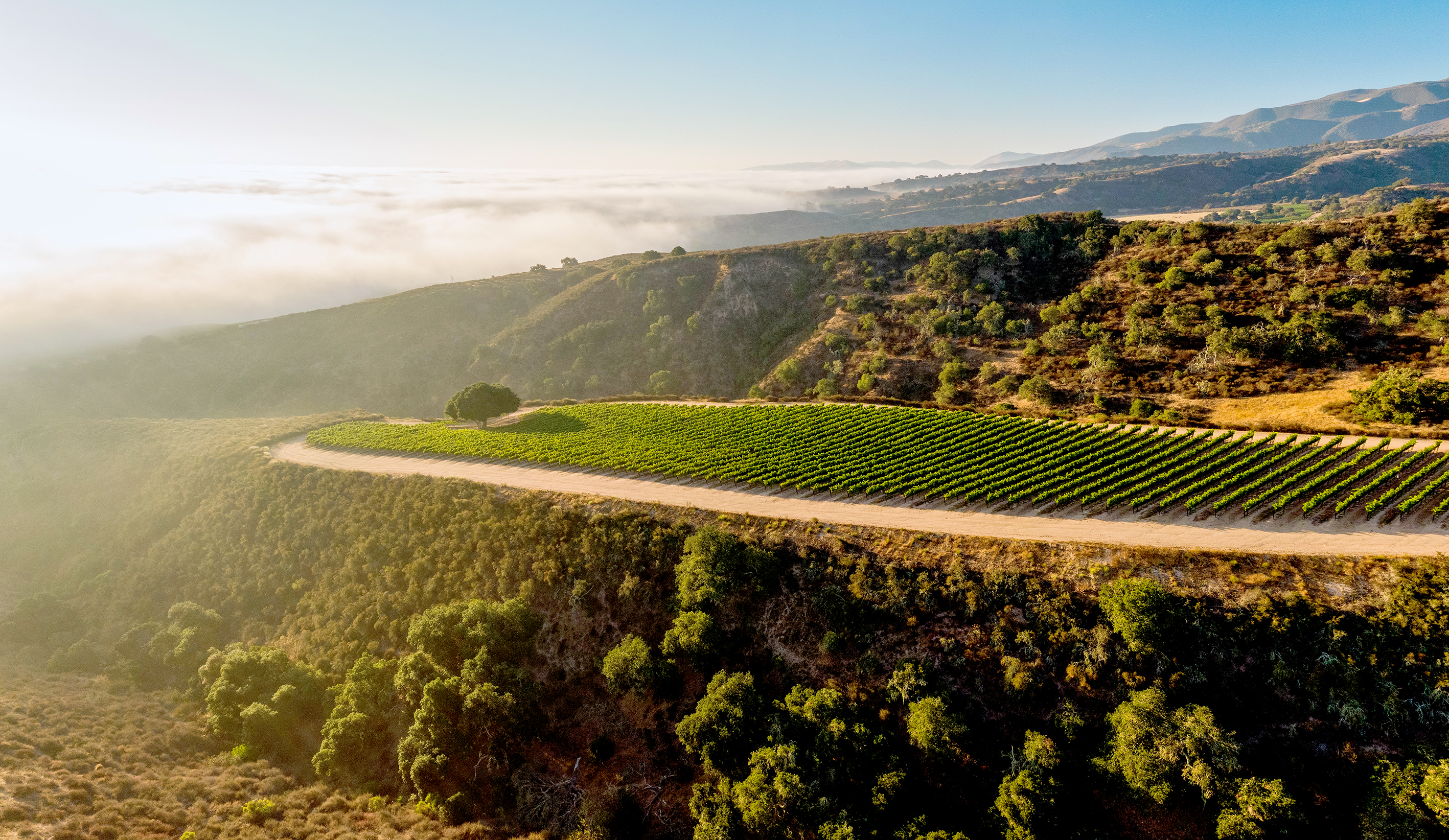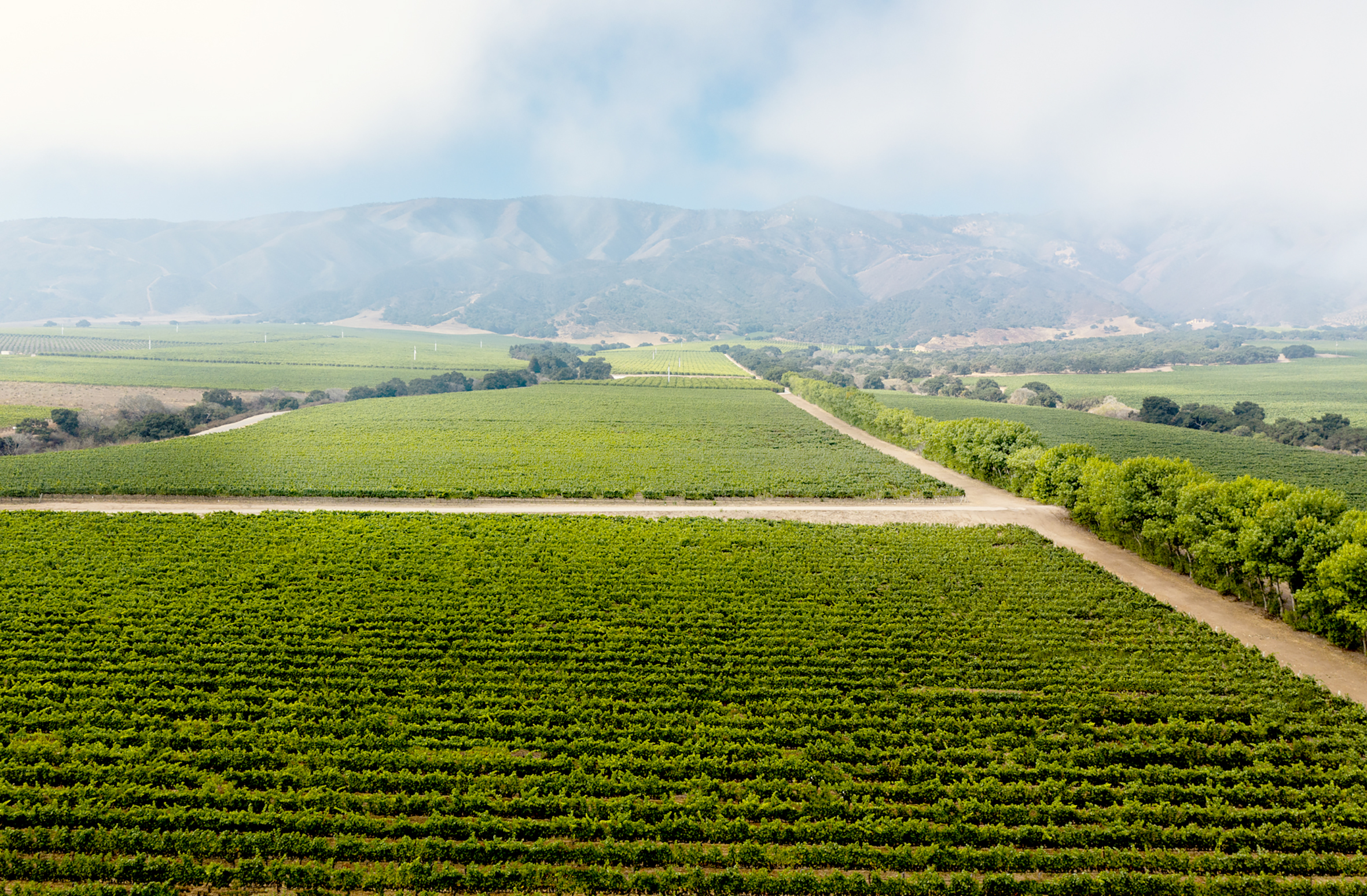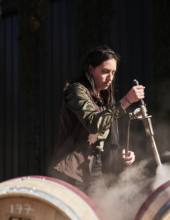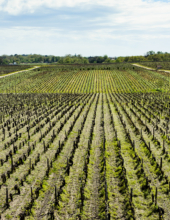22nd Feb 2024
In January this year, Lisa Perrotti-Brown spent a couple of days tasting nearly 150 wines with Santa Lucia Highlands’ top owners, growers, and winemakers.

Windswept
Santa Lucia Highlands is in Monterey County, California, just south of San Francisco and Silicon Valley. The entire AVA is only around 15 miles long and 1 mile wide. Tiny though it may be, the area is home to some of California’s greatest Pinot Noir and Chardonnay vineyards, which have become highly sought after by winemakers and collectors, including Pisoni Estate, Garys’ Vineyard, Rosella’s Vineyard, Soberanes, and Sierra Mar, just to name a few.
The first grape vines—mainly Chardonnay and Cabernet Sauvignon—were planted in Santa Lucia Highlands in 1973.
The Chardonnay kept, but Cabernet simply wouldn’t ripen. With the benefit of hindsight, Pinot Noir was a no-brainer. The defining feature of Santa Lucia Highlands’ climate is its cool, marginal nature, thanks to the maritime influence and accompanying fog, but also, uniquely, the profound effect of the ever-present wind, making for distinctly whispery, nuanced expressions of Pinot Noir.
“The first factor and the overriding one about Santa Lucia’s Highlands’ climate is the wind,” said winemaker Adam Lee, owner of Clarice and a consultant for many top wineries, specializing in crafting Pinot Noirs from Northern California. “When the Central Valley warms up in the afternoon, it works as a vacuum of sorts and pulls in cooler air with strong winds off the deep, cold Monterey Bay. This wind comes up almost every afternoon, meaning that 1 p.m. or so is the hottest part of the day. This allows the grapes to have an incredibly long hang time with a steady balance of acidity and sugar. Traditionally, the Burgundians said that a great year was a vintage that had 100 days from flowering to harvest. In the Santa Lucia Highlands, this timing is normally 130 days. This gives you grape clusters of complexity and great flavor development while maintaining very healthy levels of acidity.”

Today, 5,724 acres are planted to vines in Santa Lucia Highlands, and nearly 60% of the acreage is devoted to Pinot Noir.
“What makes us is our climate,” said grower and owner of ROAR Wines, Gary Franscioni. “The wind and the fog. Fog comes in every night at 10 p.m. and blows off at 10 a.m. We have very cool nights that make for an especially long, cool growing season. That’s why in the 1990s, everyone started pulling out all the Cabernet Sauvignon, and we started planting Pinot Noir.”
Gary’s grandfather immigrated to California from Switzerland in 1886 to become a dairy farmer. Years later, Gary’s father switched to land crops, including potatoes, sugar beets, and beans. “My family has been farming in Santa Lucia Highlands since 1907,” Gary said.
It was Gary who saw the potential for viticulture and planted the family’s first vineyards. Rosella’s Vineyard, named after Gary’s wife, was planted in 1996. Garys’ Vineyard, planted in 1997, is a joint venture between Gary Franscioni and Gary Pisoni of Pisoni Vineyards.
“For a long time, we were purely selling grapes to 20 to 24 customers,” said Franscioni. “Mostly Pinot Noir with a little Chardonnay and Syrah. Then, in 2001, I finally got enough capital to start our own label—ROAR. The winery was built in time for the 2018 vintage. I didn’t want to build a winery until I knew my sons were coming back to join the family business. I was hoping the boys would eventually want to join me, and fortunately, they did. My son Nick now works on the winery side, and Adam on the vineyard side.”
The other famous Gary from Santa Lucia Highlands is, of course, Gary Pisoni of Pisoni Vineyards, one of the pioneers of Pinot Noir in this region and largely responsible for putting the AVA on the map. He first planted vines here in 1982. His sons Mark and Jeff now work alongside him—Mark overseeing viticulture, while Jeff heads up the winemaking for their own labels. As well as their flagship Pisoni Estate Pinot Noir, I tasted two other ranges produced by Mark and Jeff, the Lucia and Lucy labels.
Jeff Pisoni is married to Bibiana González Rave, the former winemaker at Wayfarer Vineyard in Fort Ross-Seaview. Together, Jeff and Bibiana produce a stunning pair of Sauvignons from the Russian River Valley called Shared Notes, also reviewed in this article, along with Bibiana’s Cattleya and Alma de Cattleya labels. Bibiana has a flare for crafting wines with old-world restraint and grace layered with California purity and persistence—these come highly recommended.
Pisoni continues to sell fruit to select Californian wineries. Rob Jensen, owner of Testarossa Winery, has been buying fruit from Pisoni Estate and Garys’ Vineyard since the beginning. WALT Wines, owned by Napa Valley’s Hall Winery, has been purchasing fruit from Gary Franscioni since 2010.
"The biggest challenge is being based in a winery so far from the vineyards," said Megan Gunderson Paredes, Vice President of Winemaking for Hall.
“I drive down to Rosella’s and Sierra Mar Vineyards a lot, especially in the run-up to harvest. Gary is just an awesome partner in this business. He owns his own trucking company and will prepare sample gallon buckets of clusters and truck them up to us. They make frequent trips up and down the coast.”
Along with its unique climatic factors, significant hands-on farming history in the Santa Lucia Highlands is another of the stand-out factors in their production of impressive cool climate grape varieties.
“Many of the growers have been farming in the area for multiple generations,” said Adam Lee. “Not grapes, certainly, but other crops. This farming history and knowledge provide a base of experience in the area. The basic level of farming is much higher with a far greater understanding of the area because your family has been doing it—in one form or another—for generations. The highest quality fruit comes from growers who have adjusted their basic farming to be grape-specific. But overall, the base level in the area is incredibly high. One of our favorite things about the Santa Lucia Highlands is after we leave checking the vineyards, we have bushels of kale, avocados, and lemons from our vineyard growers.”
My two-day tasting of nearly 150 new and upcoming releases confirms that this small, windswept region is well worth seeking out, especially for lovers of elegantly styled, nuanced Pinot Noirs and Chardonnays.
–
Article & Reviews by Lisa Perrotti-Brown MW

PRODUCERS IN THIS ARTICLE
> Show all wines sorted by scoreMore articles

Bordeaux 2023 Vintage Report and Reviews from Barrel
09th May 2024
649 tasting notes

Cathiard Vineyard New Releases
02nd May 2024
3 tasting notes

Bordeaux 2023 Preliminary Vintage Report and Reviews from Barrel
29th Apr 2024
56 tasting notes

2021 Bordeaux in Bottle and A Modest Proposal
24th Apr 2024
599 tasting notes
Show all articles